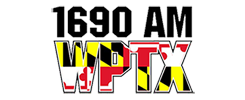With hotter summers bringing hotter working conditions, the Maryland Department of Labor is implementing a heat stress standard to protect workers. But workers' advocates say it falls short on specifics. The Legislature directed the Labor Department in 2020 to establish new heat stress protections for workers. A draft standard was released in January, for indoor or outdoor work environments when the heat index is above 80 degrees. But Darryl Alexander with the National Council for Occupational Safety and Health says the plan doesn't establish specifics for monitoring.
"They ought to be required to say how they're going to monitor the workplace for changes in temperature, humidity, heat index. The way they require to monitor the workplace for noise, or chemicals or anything else – that, in their written plans, they have to say how they're going to do it."
Alexander says ideally, employers would be required to use what's known as a "wet bulb globe temperature meter" – which monitors the heat index as well as measuring radiant heat from sources such as ovens or sunlight.
The draft standard requires employers to put an effective heat illness prevention and management plan in writing, and provide workers annual heat stress training. And when the heat index reaches 90, it requires employers to consider the effects of personal protective equipment on heat stress – but there are no specifics on how to do that. Scott Schneider, also with the National Council for Occupational Safety and Health, says how hard you're working and what you're wearing can both contribute to heat stress.
"If you're working and you're wearing impermeable clothing – like you're wearing, like a Tyvek suit, like you're doing asbestos abatement, or if you're out in the fields and you have protective clothing to protect you from pesticide use – that clothing can prevent you from sweating. And that also will increase your heat stress risk."
He says when calculating heat stress risk, there are methods to account for protective clothing or harder work. He thinks the standard should include specifics on both. The Department of Labor is expected to have the plan finalized by this summer.









